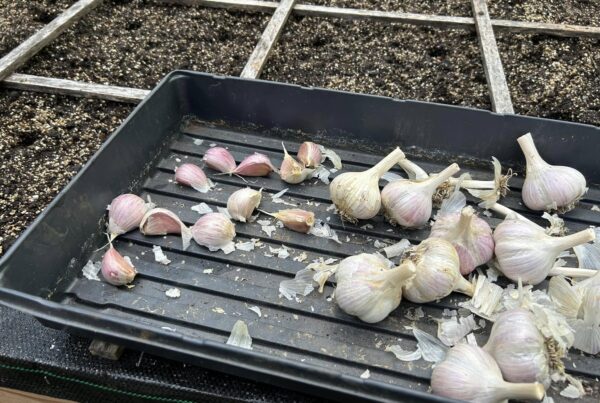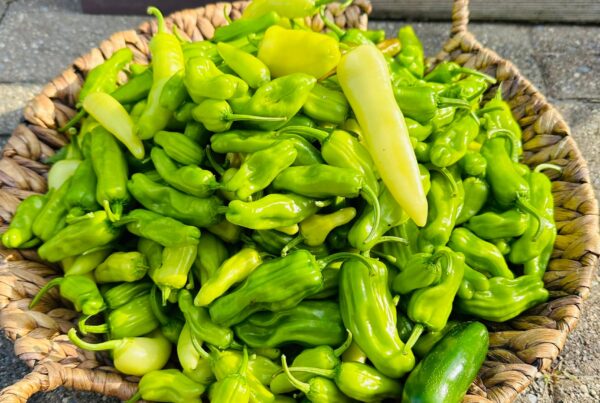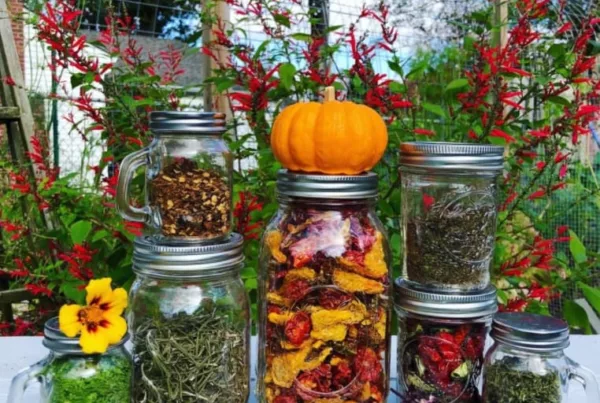Written by Rick Bickling
Sweet Potatoes. Yams. You probably don’t spend much time thinking about them other than when Grandma serves her candied yams, with or without marshmallows, during the holidays, or the occasional walk on the wild side when you order sweet potato fries instead of regular French fries at the restaurant. Restaurants, remember them? Although I wouldn’t recommend trying to grow marshmallows in your Square Foot Garden, Sweet potatoes can easily be grown and are an exceptional addition to your SFG.
First things first. What’s the difference between sweet potatoes and yams? Although these two names are often used interchangeably, they are actually two very different plants.
 Yams (dioscorea batatas) are monocots, like grasses and lilies, and are native to Africa and Asia. The edible portion grows as an underground tuber, has a rough, scaly, tree bark-like skin, with a very dry, hard, and starchy flesh. Yams are typically NOT grown or sold as a food crop in the United States.
Yams (dioscorea batatas) are monocots, like grasses and lilies, and are native to Africa and Asia. The edible portion grows as an underground tuber, has a rough, scaly, tree bark-like skin, with a very dry, hard, and starchy flesh. Yams are typically NOT grown or sold as a food crop in the United States.
Sweet potatoes (lpomoea batatas) are a member of the morning glory plant family native to Central and South America and were once grown by George Washington. They are a perennial, but are grown as a warm-season annual. The edible portion is a storage root that has smooth, thin skin that comes in a variety of colors including white, yellow, red, purple, brown, or orange. The flesh is an excellent source of beta-carotene, which your body converts into vitamin A, and found in colors including white, yellow, orange, or orange-red.
Sweet potato varieties are classified as either firm or soft. When cooked, firm sweet potatoes remain firm and dry, similar to an Irish potato, while soft varieties become soft, moist, and sweet. These soft variety sweet potatoes are sometimes referred to as “yams” and are the most commonly grown and consumed sweet potatoes in the United States.
Sweet potatoes grow best when the days are hot and the nights are warm. They are very heat tolerant and can even survive a light frost as long as the soil temperature remains above 55 F. They are grown from slips and produce large vines that grow very aggressively. Because of this aggressive growth habit, sweet potatoes should either be grown in a SFG square where the vine can be trained up a trellis, or in a Square Foot Garden Bucket, where the vine will not interfere with plants in neighboring squares.
Be sure to watch our video where Mel talks about growing potatoes in a Square Foot Gardening Bucket for some great tips. Unlike growing Irish potatoes, where the seed potato is planted towards the bottom of the bucket and soil is added as the plant grows, sweet potato slips are planted at the top of a bucket that has been filled to the top with Mel’s Mix.
Plant your slips two weeks or more after the last frost in your area, but at least 150 days before the first frost. Mel’s Mix is the perfect growing medium for sweet potatoes as they prefer loose, friable soil that does not have any fertilizer added to it, other than compost. Since the root is the storage vessel for the plant’s nutrients, added fertilizer may result in increased vine growth, but long and stringy roots.
Although fairly disease and pest resistant, leaf spots, nematodes, beetles, cut worms, and weevils can sometimes impact your sweet potatoes. Damage to the vine will have very little impact on the quality and amount of roots the plant will produce.
A single plant will yield about 2 lbs. of sweet potatoes, and they are ready to harvest immediately before or right after the first fall frost. You can tell it is harvest time when the leaves turn yellow which indicates that growth has stopped and the roots are mature. Try not to water the plant for the 2 weeks before harvesting. Sweet potatoes have delicate skin so be careful when harvesting so as not to bruise them. Once harvested, let the sweet potatoes dry for 2 to 3 hours, then store the roots in a dry area where the temperature will remain between 80° and 85 ° F for 10 to 14 days. After this curing period, your sweet potatoes can be stored in a cool, dark, dry location where the temperate remains between 55° and 60° F for several months.
So, try something new in your Square Foot Garden and grow some sweet potatoes. And, if you want, you can impress family and friends alike at the Thanksgiving table with your new-found knowledge of the difference between sweet potatoes and yams. On second thought, just enjoy the meal and pass the yams, I mean sweet potatoes.



